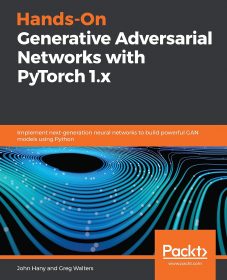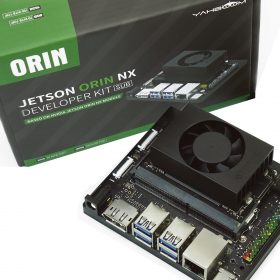Introduction
Artificial Intelligence (AI) is transforming our world at an unprecedented pace. From self-driving cars to smart home systems, personalized recommendations to medical diagnostics, AI applications have permeated every aspect of our lives. As technology continues to evolve, emerging trends and applications are driving changes across various industries. This article delves into the latest trends in AI technology, covering deep learning, generative AI, and edge computing. It also introduces practical tools and resources to help you better understand and apply these cutting-edge technologies.

Background
The rapid development of AI is fueled by the enhancement of computing power, the proliferation of big data, and improvements in algorithms. Early AI systems relied on rules and logical reasoning, whereas modern AI achieves autonomous learning and intelligent decision-making through complex algorithms and large datasets. This shift has not only improved AI system performance but also expanded its application scope. According to recent market research reports, the global AI market is expected to continue growing in the coming years, becoming a significant force driving technological innovation and economic development.

Core Trends
Deep Learning
Deep learning is a crucial branch of AI that processes and analyzes complex data patterns through multi-layer neural networks. In recent years, significant advancements have been made in deep learning technologies, including improvements in Convolutional Neural Networks (CNNs) and Recurrent Neural Networks (RNNs). CNNs excel in image recognition and computer vision, while RNNs play a vital role in natural language processing and speech recognition.
Technical Overview: Deep learning emulates the workings of the human brain’s neural networks, enabling automatic feature extraction and pattern recognition from complex data. For example, CNNs use convolutional layers and pooling layers to extract image features, followed by fully connected layers for classification. This approach has achieved remarkable success in image classification, object detection, and autonomous driving.
Application Case: In the medical field, deep learning is widely used for medical image analysis. Studies show that training deep learning models can improve early diagnosis accuracy for diseases like cancer. For instance, DeepMind’s AlphaFold system successfully predicted protein structures using deep learning, advancing biomedical research.
Recommended Products:
- Deep Learning: Algorithms and Applications – This book provides a detailed introduction to core algorithms, model training, and practical applications of deep learning, ideal for readers seeking an in-depth understanding.
Check out the latest prices at Amazon
- AI Learning Kit – This kit includes practical tools and resources like TensorFlow and PyTorch frameworks, helping you master deep learning techniques through hands-on practice.
Check out the latest prices at Amazon
Generative AI
Generative AI creates realistic content using technologies such as Generative Adversarial Networks (GANs) and Variational Autoencoders (VAEs). Generative AI can produce images, audio, new texts, and art pieces, showing immense potential in art creation, game design, and virtual reality.
Technical Overview: GANs consist of a generator and a discriminator, generating high-quality content through adversarial training. The generator creates content, while the discriminator evaluates its authenticity. VAEs encode input data into distributions in latent space and decode it to generate new data. These technologies can be applied to image generation, text generation, and data augmentation.
Application Case: In art creation, generative AI is used to create new artworks. For example, artists can use GANs to generate uniquely styled art pieces or VAEs to create new musical compositions. In game design, generative AI can create rich game worlds and virtual characters, enhancing immersion and enjoyment.
Recommended Products:
- Hands-On Generative Adversarial Networks – This book explores the principles, implementation methods, and application examples of GANs, perfect for readers interested in generative AI.

Check out the latest prices at Amazon
- Comprehensive Deep Learning Online Course – This course offers extensive generative AI lessons, including theoretical and practical content on GANs and VAEs, helping you systematically master the use of generative models.
Check out the latest prices at Amazon
Edge Computing
Edge computing moves computing power and data processing from central servers to edge devices near the data source. This technology is particularly important in applications requiring low latency and high bandwidth, such as smart cities, industrial automation, and the Internet of Things (IoT). Edge computing can speed up data processing, reduce transmission delays, and lower bandwidth costs.
Technical Overview: Edge computing deploys computing resources near data generation points to process data in real-time, reducing reliance on central data centers. This approach handles high-frequency data streams like video surveillance, sensor data, and real-time analytics. In smart cities, edge computing enables real-time traffic management and public safety monitoring. In industrial automation, it enhances equipment monitoring and control efficiency.
Application Case: In smart cities, edge computing is used for real-time traffic flow analysis and management. By deploying edge computing devices on traffic lights and cameras, traffic conditions can be monitored and signals optimized in real-time. In industrial automation, edge computing is widely used to enhance production line automation, prevent equipment failures, and improve production efficiency through real-time data analysis.
Recommended Products:
- Edge Computing Development Board – A tool suitable for developers and engineers, supporting the development and testing of edge computing applications, helping you implement edge computing technology in practical projects.
Check out the latest prices at Amazon
- IoT Hardware Tools – Provides various hardware devices for edge computing and IoT, such as sensors, processors, and connectivity modules, aiding your technical implementation.
Check out the latest prices at Amazon
Application Examples
Here are some successful cases of AI technology in practical applications:
- Medical Field: AI helps doctors improve diagnostic accuracy through deep learning models. For instance, AI systems can analyze medical images like X-rays and CT scans to detect early signs of cancer. Research shows that AI systems can identify diseases earlier than traditional methods, assisting doctors in developing more effective treatment plans.
- Financial Field: In the financial industry, AI is used to detect fraud and predict market trends. AI systems analyze transaction data and user behavior to identify and prevent fraudulent activities in real-time. Moreover, AI is used to analyze market data, offering investment advice and risk predictions.
- Retail Field: AI technology is applied in the retail industry for personalized recommendations and inventory management. By analyzing purchase history and browsing behavior, AI systems provide personalized product recommendations, increasing sales conversion rates. AI also predicts inventory demand, optimizing inventory management to reduce shortages and surpluses.
Future Outlook
In the future, AI technology will continue to evolve, bringing more innovations and challenges. AI is expected to develop higher autonomous learning capabilities, adapting to changing environments and needs automatically. Additionally, challenges in privacy protection and ethical issues need to be addressed. Future AI systems will need to balance performance and ethics, ensuring the technology is safe and fair.
Conclusion
Artificial intelligence is driving development across various industries at a remarkable speed. From deep learning to generative AI and edge computing, advancements in these technologies are creating new opportunities and challenges. By understanding and applying these technologies, you can better grasp future trends and enhance your competitiveness. Explore the recommended resources and tools to deepen your understanding and application of AI technologies, and embrace future challenges and opportunities.





